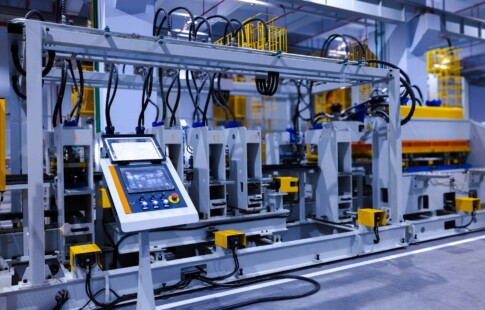
Understanding Biomass Pros and Cons
We are reader-supported. When you buy through links on our site, we may earn affiliate commission.
Biomass is a significant and largely untapped source of sustainable energy. It’s not 100% green and doesn’t eliminate all of the fossil fuel industry’s shortcomings, but it’s shaping up to be a critical and transformative part of the world’s energy infrastructure. It’s time to demystify how this energy system works and explore biomass pros and cons. This technology could be vital as the world transitions to cleaner, more sustainable power.
How Does Biomass Energy Work?
It’s worth understanding just how the mechanics of these energy systems function before diving in with biomass pros and cons. The underlying mechanism is fairly straightforward, but it takes various forms depending on the energy requirements of the application, the available fuel stock and other factors.
Here are the three different kinds of biopower technologies currently in use:
1. Direct Combustion
Direct combustion — burning biological matter — is the most common form biomass technology takes worldwide. If you’re familiar with building a campfire to stay warm at night and foraging for dry wood to burn, then you’ve taken part in the most basic form of direct combustion biomass energy generation.
In more sophisticated forms, direct combustion generates electricity by burning biological matter in a boiler enclosure and then harnessing the resulting steam using turbine blades. Turning the blades yields mechanical energy converted by a generator into usable electricity.
Examples of biomass materials employed in combustion systems include yard and farm waste — such as straw, husks and stalks — plant byproducts, wood or wood pellets, and even algae.
2. Anaerobic Digestion
Anaerobic digestion, or bacterial composition, generates energy using materials otherwise unsuitable for other purposes. Direct combustion might use freshly cut timber or wood pellets, while anaerobic digestion leverages materials like biosolids from wastewater treatment plants, food waste and manure.
These materials are gathered in a sealed reactor to harvest energy, where microbes quickly break down the biological matter. The digestion process yields biogases — composed of hydrogen sulfide, methane and CO2 — that can be captured and used similarly to natural gas.
3. Gas/Fuel Conversion
It’s also possible to convert biomass into liquid or gaseous fuels. One process, gasification, places biomass in a vacuum and exposes it to extreme temperatures to create synthesis gas. This gas can be used in conventional boiler systems to create usable electricity.
Another conversion process — pyrolysis — is similar to gasification but heats the biomass at lower temperatures. The result is a kind of “bio-oil” that can be used instead of conventional oil to power engines, furnaces, turbines and other mechanical assets.
What Are the Advantages of Biomass Energy?
Biomass-based energy systems have much to offer the built environment, especially when environmental consciousness is at an all-time high. Here are the most important advantages:
1. Renewable Resource
The materials used in biomass reactors of any kind are renewable. Croplands yield a practically endless supply of solid biological waste. Forests — when managed conscientiously — provide wood that can be burned to stay warm or converted into electricity.
2. Cuts Material Waste
Landfills receive a dangerously huge amount of solid waste. The U.S. has an outsized influence on landfill capacity and generates almost 300 million tons of municipal solid waste yearly.
A substantial portion could be leveraged for energy generation via biomass reactors, preventing it from decomposing in landfills and releasing methane and other greenhouse gases.
3. Dependable
People often point out that mainstream renewables like solar and wind aren’t reliable in all conditions. The sun isn’t always shining and the wind won’t always blow when you need it to. However, this is less of a viable criticism with the addition of battery storage capacity.
On the other hand, there’s no such downside with biomass energy. It’s not intermittently available like the wind — there’s almost always something you can burn, depending on the season.
4. Reduces Fossil Fuel Use
National energy systems make moves to transition from fossil fuels, while local economies and communities could commit themselves to making more bioenergy investments. Gas derived from biomass has an ironic twin advantage: It can be used in lots of existing natural gas, gasoline, and diesel equipment and infrastructure, but it simultaneously reduces dependence on those more environmentally harmful energy sources.
What Are the Disadvantages of Biomass Energy?
The conversation about biomass pros and cons isn’t complete without an honest accounting of its shortcomings. Some of these drawbacks depend upon the biomass method chosen, but it’s important to understand them in their entirety:
1.Pollution
The U.S. Department of Energy points out that combustion-type biomass reactors are frequently and favorably compared to coal-fired power plants.
Burning biological matter is more environmentally friendly than burning coal, but biomass still releases certain pollutants into the immediate environment. This includes CO2, volatile organic compounds (VOCs) and nitrogen oxides.
2. Deforestation
Investing in biomass-based energy systems usually results in localized and sometimes catastrophic deforestation in areas with little available biomass apart from living trees.
Scientists across several continents are issuing increasingly urgent pleas to find alternatives to biomass energy systems that rely on old-growth forests.
A nation’s available energy sources and natural resources are matters of luck, ultimately. That’s why concerted, organized efforts — like United Nations climate treaties and plans to wean less-developed nations off potentially destructive energy technologies — are vital in the coming years.
3.Cost Outlays
The U.S. Department of Energy is overall optimistic about the ability of biomass to contribute to the nation’s energy-generation portfolio. Nevertheless, it’s realistic about some of the disadvantages — including cost outlays.
The DOE observes that biomass energy systems are frequently more expensive than other renewable technologies like solar power and wind turbines. However, it counters with the observation that even the most costly forms of bioenergy are still just as affordable as — or less expensive than — fossil fuel energy systems.
Consider Biomass Pros and Cons
Ultimately, it may be prudent to view biomass-based energy systems as stepping stones to true energy independence. The Natural Resources Defense Council (NRDC) observes that 43% of existing biomass energy capacity in the U.S. is based on burning wood as fuel. Biomass was 5% of the United States’ energy portfolio in 2021.
Unfortunately, there is no guarantee that the forests leveraged for that amount of energy output will be sustainably managed or regrown. This could disqualify any biomass formats not based on reclaiming energy from biological waste from playing a role in the world’s future energy portfolio.
According to the NRDC, solar, wind and geothermal energy don’t take decades of waiting to renew themselves. The industry has plenty of innovations yet to make, but it seems these are the current favorites to win the day when it comes to renewable power.
Share on
Like what you read? Join other Environment.co readers!
Get the latest updates on our planet by subscribing to the Environment.co newsletter!
About the author
Jane Marsh
Starting from an early age, Jane Marsh loved all animals and became a budding environmentalist. Now, Jane works as the Editor-in-Chief of Environment.co where she covers topics related to climate policy, renewable energy, the food industry, and more.





